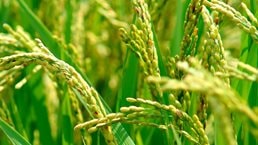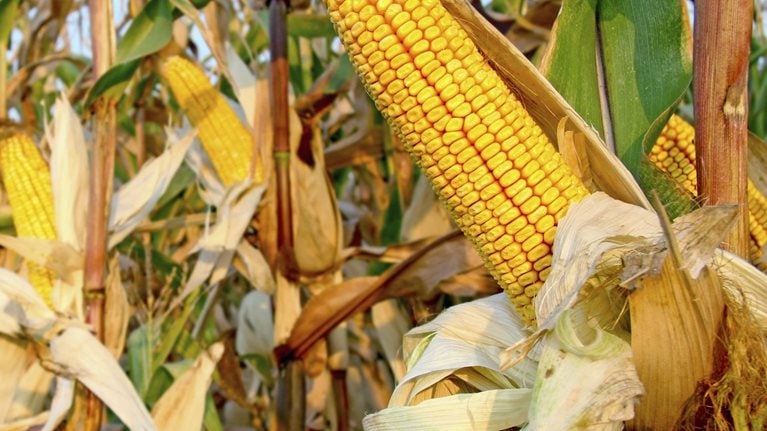Agricultural transformation lies at the core of poverty reduction, food security, and improved nutrition. With few exceptions, countries that have moved toward middle-income status have been initially driven along that path of economic growth by the transformation of their agriculture sector. Yet many countries today remain stalled in their journey. Globally, about one in nine people are hungry and one-third of the population suffers from malnutrition.11.World Food Programme (WFP), “Zero Hunger,” wfp.org. The potential impact from unlocking agricultural transformation is large. In India, for example, McKinsey research suggests that addressing key agriculture sector constraints could create an increase in agricultural output of $175 billion and an 85 percent average increase in farmers’ incomes by 2025.22.Lutz Goedde, Avinash Goyal, Nitika Nathani, and Chandrika Rajagopalan, Harvesting golden opportunities in Indian agriculture: From food security to farmers’ income security by 2025, McKinsey & Company, July 2017.
Stay current on your favorite topics
Across Africa, Asia, and Latin America, many countries seeking to accelerate agricultural transformation have integrated into their national economic development plans a set of good recommendations for policies and public investments in the agriculture sector. Some countries have also set up mechanisms to successfully implement these plans. (See an accompanying article, “Successful agricultural transformations: Six core elements of planning and delivery.”) Our evidence suggests, however, that even with a good development plan and strategies for delivery, unless certain “readiness” factors are addressed, countries will continue to struggle with agricultural transformation.
Working with the support of the Bill & Melinda Gates Foundation, the McKinsey Center for Agricultural Transformation identified a set of “transformation readiness factors”—institutional, organizational, and political components that underlie successful agricultural transformations. To understand what makes a country ready to implement a good agricultural transformation plan, McKinsey mapped dozens of historical cases of agricultural transformations (both successes and failures), synthesized a broad range of expert opinions, and evaluated hundreds of possible metrics.
One commonly absent component of transformation readiness relates to low support for transformation leadership. Transformations depend on talented people spurring them, with access to the right tools. In our research, we found that leaders often lacked transformation training, did not have access to good analytics, and often operated without a mentor network to use for support and practical advice.
A second commonly missing readiness factor relates to misalignments among key stakeholders. Stakeholders at the national level (including leaders from different ministries, the private sector, and civil society) often fail to come together and align priorities in a detailed way. Also, there is a vertical misalignment of different layers of government (national, state, and local) that can put the progress of transformations at risk of failure.
These components of a country’s readiness for agricultural transformation are often hard to measure. While we can reasonably measure changes in policies and the allocation of government expenditures, readiness also depends on hard-to-measure shifts in political commitment and institutional innovation. With this body of work, the McKinsey Center for Agricultural Transformation set out not only to determine the major components of transformation readiness but also to identify and validate measurable readiness indicators. This article provides details of those indicators and a case study looking at changes in Ethiopia’s readiness over time. Our hope is that the insights provided in this article will broaden the discussion of how to accelerate agricultural transformation to include critical issues beyond good policies and investments.
What is agricultural transformation?
Few countries have industrialized without first modernizing their agriculture sector. Successful agricultural transformations can rapidly reduce poverty because they create powerful engines of rural economic growth. The dynamics of an agricultural transformation start with increasing the income of rural households, higher productivity on farms, and greater demand in local markets. As the sector becomes more productive, larger markets are served, agroprocessing expands, and some farmers decide to spend less time farming and take other jobs that offer better economic opportunities. With few exceptions, as countries move along an economic-development path, their agriculture sector modernizes, becoming more efficient and less labor intensive. At the same time, non-agriculture sectors in the economy (for example, manufacturing and service sectors) grow and absorb more labor.
For our empirical work evaluating readiness factors, we had to first measure when countries were moving through agricultural transformations and when they were stalling or slowing down. The classic indicators of economic transformation are a decline in a country’s agricultural output as a percentage of total GDP and a drop in the percentage of economically active people engaged in agriculture as a share of the total workforce. These indicators show that the agriculture sector has become efficient and the rest of the economy is growing.
Would you like to learn more about ACRE, our agricultural analytics platform?
To complement these macroeconomic indicators, we also used metrics to define agricultural transformation at a more local, or even household, level. For instance, the ratio of agribusiness output as a percentage of total agricultural GDP will rise in the early stages of a rural transformation and then fall as the non-agriculture sectors of an economy grow. Rural wages generally increase as rural transformation occurs (although there are many factors contributing to this). Over time, farming households’ consumption patterns change. They will buy more in the market (and consume less of what they grow on their own land), and they will purchase more processed food. How a farming family earns income will also change during an agricultural transformation. Some farmers will stay wholly engaged in farming, adopting new technologies and perhaps expanding operations. Other farming households will shift to earn income from new opportunities in the local economy but keep growing some food for their families. Still others will leave farming altogether and move off the land. The dynamics of an agricultural transformation also vary tremendously by geography in a country, depending on factors such as the quality of roads, markets, and agroecologies. Overall, these dynamics and others characterize agricultural transformation and can help us track a country’s progress.
How ready is a country to implement a good agricultural transformation plan?
The metrics noted previously indicate the rate at which agricultural transformation is occurring. As we studied the historical paths of agricultural transformation across Africa, Asia, and Latin America, we began to see patterns. The metrics measuring our readiness factors were selected with extensive expert consultations in combination with research into how these metrics changed during successful and unsuccessful periods of transformations in countries. Through this process, we rejected metrics that were lagging indicators, shifting after transformation had already been accelerating. We focused on metrics that illustrated readiness factors that were present before a country’s successful acceleration of its transformation and prioritized metrics in which, conversely, the same factors were absent in countries where transformations were stalled or progressing slowly. Even though countries take different paths through transformation, our study found 25 metrics across five important categories that were common to the majority of successful transformations (described in more detail in the following section). Countries that were missing one more of these ingredients often showed a slow or stalled agricultural transformation.
Three critical areas of influence
The first indicators we list in Exhibit 1 are the most essential for agricultural transformation. We selected ten metrics to measure government commitment, the government’s capacity to follow through on its commitments, and its ability to modify its strategies and implementation approach as an agricultural transformation moves ahead. Across many examples of agricultural transformations that we assessed, the presence of these factors appeared to be necessary but not sufficient. Countries that had these in place did not always transform, but without one or more of these components, there are doubts as to whether even strong agricultural transformation policies and investments will achieve their goals.

The first category, then, measures factors related to getting a transformation moving. Building on this, the following two categories include factors that influence the potential speed, path, and sustainability of the transformation. These enabling capacities can be built in a country over time. Some can be changed in the shorter term during the course of a transformation (category two). Others are considered more like country endowments (category three), which require a longer time and significant additional resources to change. These include, for example, improving transportation infrastructure or raising literacy rates.
We selected 15 indicators to provide insight into these latter two categories of enablers. It is worth noting that there are many indicators related to agricultural transformation that are not included in this set. The framework is not meant to be comprehensive. This is particularly evident in the last category listing endowment indicators. Land rights, access to markets, and agroecological endowments are some of the most central determinants of agricultural transformation. The absence of these and other factors is a consequence of attempts both to use standardized and accessible data as well as to be as parsimonious as possible in representing factors that affect the speed and sustainability of a country’s agricultural transformation.
Case study: Essential ingredients of readiness and Ethiopia’s journey
As we began to interpret the agricultural transformation paths of countries, we started looking for common readiness factors. The patterns we found were surprisingly robust over time, by geography, and among diverse paths of transformation.
Ethiopia’s path through the first stages of a national agricultural transformation is a sub-Saharan African success story. In a region where transformation has been elusive, many countries are looking to the Ethiopian example for lessons. As such, it has been the subject of a great many studies. Analyzing Ethiopia’s policies, however, won’t tell the whole story, and this country makes a good choice to illustrate the added value of considering readiness factors. In particular, our analysis shows how Ethiopia’s government made critical institutional, organizational, and political changes that increased the impact of its early-stage agricultural transformation policies and investments.
Agricultural reform has a long history in Ethiopia, influenced by changes in the rural political economy, planned and unplanned migration, land reform, and periods of war and famine. With recognition of the many influential factors that form the story of agricultural transformation in Ethiopia, we focus our analysis on the 15 years between 2000 and 2015. During these years, Ethiopia showed solid signs of agricultural transformation, including increased agricultural productivity and poverty reduction. As background, Exhibit 2 shows a timeline of major events in Ethiopia’s transformation pathway since the early 1990s. Exhibit 3 illustrates how the selected readiness metrics changed in Ethiopia from 2000 to 2015.


As we begin our analysis, starting in 2000, we can see that the country has already made progress on some readiness factors, while other factors change during the 15 years studied. For example, in 2000, Ethiopia was already spending considerable sums on agricultural development and was committed to stable policies. Indicator 1, for example, shows moderate performance in government expenditure on agriculture. It is important to note that while indicator 1 tracks overall budgeted expenditure on agriculture, this is usually regarded as only a partial view of the expenditure picture. Country governments vary in their ability to disperse the targeted budget. For Ethiopia, indicator 5 shows good capacity for disbursement. Countries also vary in how they spend their agricultural budget. Recognizing the importance of this, we included a metric (indicator 6) on the quality of expenditure (how much is spent on agricultural transformation enablers such as research and infrastructure versus subsidies and other expenditures). For this parsing of the components of spending within the agricultural budget, we did not have historical data for Ethiopia.
Beyond national agricultural expenditure, in Ethiopia the goals of agricultural transformation were already a high priority for the government (indicator 2 shows moderate performance), and there was commitment to policy stability (indicator 7).
But several of the indicators do not begin to shift until after 2000. This is illustrated in the framework by movement in individual metrics on a scale from low performance (red) toward high performance (green); gray indicates the absence of data. Two indicators of commitment to transformation (indicators 1 and 2) shifted during the 2000 to 2005 period from moderate to high. And 2002 saw a jump in the quality of the agricultural development plan (indicator 4), including clearer priorities, measurable targets, cost estimates, and specific gender strategies.
Still other metrics shifted some years later, after a government agency, the Agricultural Transformation Agency (ATA), was created in 2010 and charged with strategy and delivery of the policies and investments that drive an agricultural transformation. By examining this framework of readiness indicators, it is possible to understand functionally what the ATA accomplished in giving Ethiopia a better foundation on which to build the right policies and investments for agricultural transformation. We can peel away the structure to look at the critical challenges that the ATA solved, and in the process translate these approaches to other countries. As an example, the ATA enabled a clearer and more effective process to align central and local agricultural strategies (changes can be seen in indicator 10). The ATA also created ongoing capacity for performance tracking of the country’s agricultural strategy (indicator 11); improved the consultation process across government, donors, and the private sector (indicator 13); and increased the capacity of ministries to coordinate agricultural policies (indicator 14).
The last category of readiness metrics seeks to offer insight into the longer-term trajectory of agricultural transformation. Here, the metrics indicate that Ethiopia likely has some long-term challenges to keep up the momentum of agricultural transformation. In a shift from early-stage transformation, it is critical for any country to change policies, investments, and institutional innovations accordingly (for example, prioritizing more engagement with the private sector and continuing to invest in longer-term, expensive projects such as rural electrification and roads).

Successful agricultural transformations: Six core elements of planning and delivery
As noted in the introduction, these endowment indicators are only a representative selection of possible factors, with many issues necessarily omitted. For example, the way in which countries approach land rights (access to, ownership of, and the ability to exchange land) fundamentally determines the longer-term trajectory of agricultural transformation and the poverty reduction it will achieve. Management of population growth and a government’s approach to family planning can be critical to ensuring smallholder farming families can still make a living from their plot. The endowment indicators found in this category also do not reflect the subnational geospatial differences in these metrics that are so critical for strategically accelerating and sustaining agricultural transformation. These indicators were selected in full recognition of these constraints, intended not to speak to what needs to be built over time but instead to act as proxies indicating the likely speed and sustainability of a transformation.
In summary, the 25 metrics we tracked for Ethiopia in the early stages of its transformation offer important insights about the country’s readiness—how the country changed political, institutional, and organizational aspects to create a good foundation for its policies and public investments. For one, the critical importance of the ATA stands out as shifting foundational components. Specifically, the analysis helps steer the discussion from whether to replicate an ATA in other countries to a more nuanced conversation about the functions of the ATA that were essential to agricultural transformation in Ethiopia. These functions have direct parallels in other countries, but the mechanism for creating solutions may be quite different in those places.
We conclude with a recognition that every country’s agricultural transformation path is different and that it is challenging for governments and international donors to identify a course that will both accelerate the transformation as well as reduce the likelihood of stalling. Also, we are still learning how today’s transformations are different from those in past decades, when economic development happened in a global trading, manufacturing, and finance environment that looked quite different. Even within that diversity of transformation paths, however, it is instructive to find a common set of institutional, organizational, and political factors that enable agricultural transformations.
We hope our work complements the excellent research under way around the world on agricultural transformation policy and that the indicators we derived are helpful to national governments, donors, civil society, and the private sector. They may be useful for country governments in identifying priorities for change. Donors may find these insights helpful to inform their programs by aligning them with country needs. Donors can also employ the framework to improve the dialogue they have with country leaders as well as the potential for collaboration. Finally, the framework may help companies better understand the progress a country is making and identify remaining gaps, allowing them to focus investments, including in public–private partnerships, on specific agricultural subsectors.


